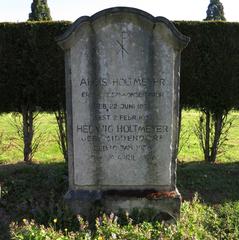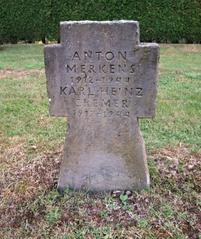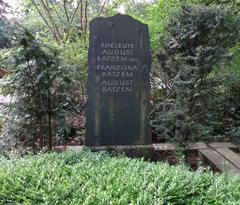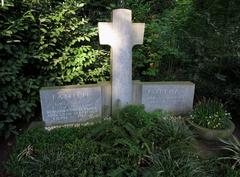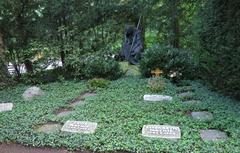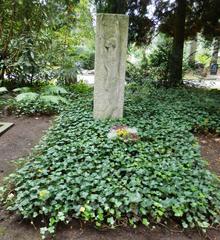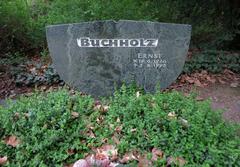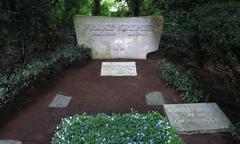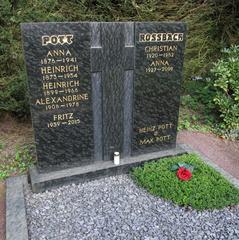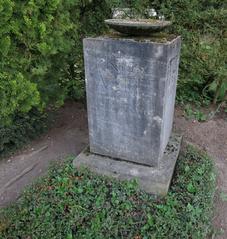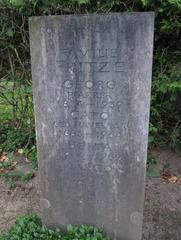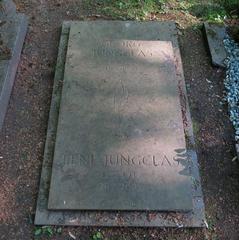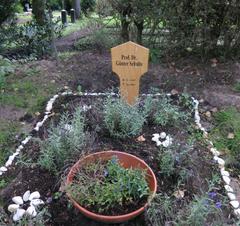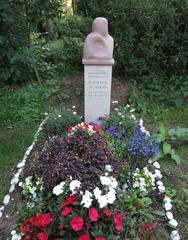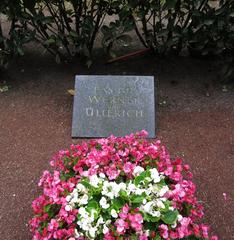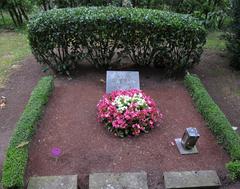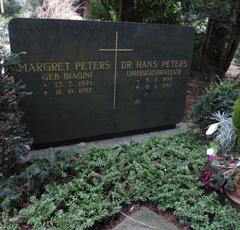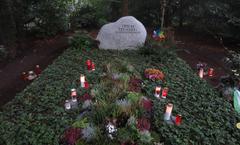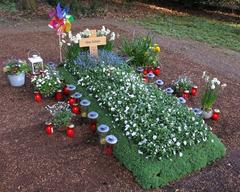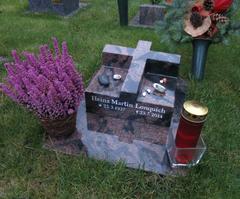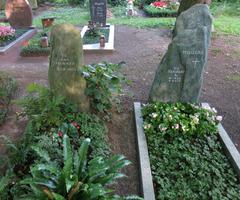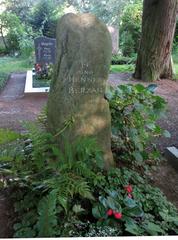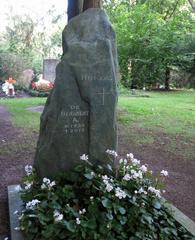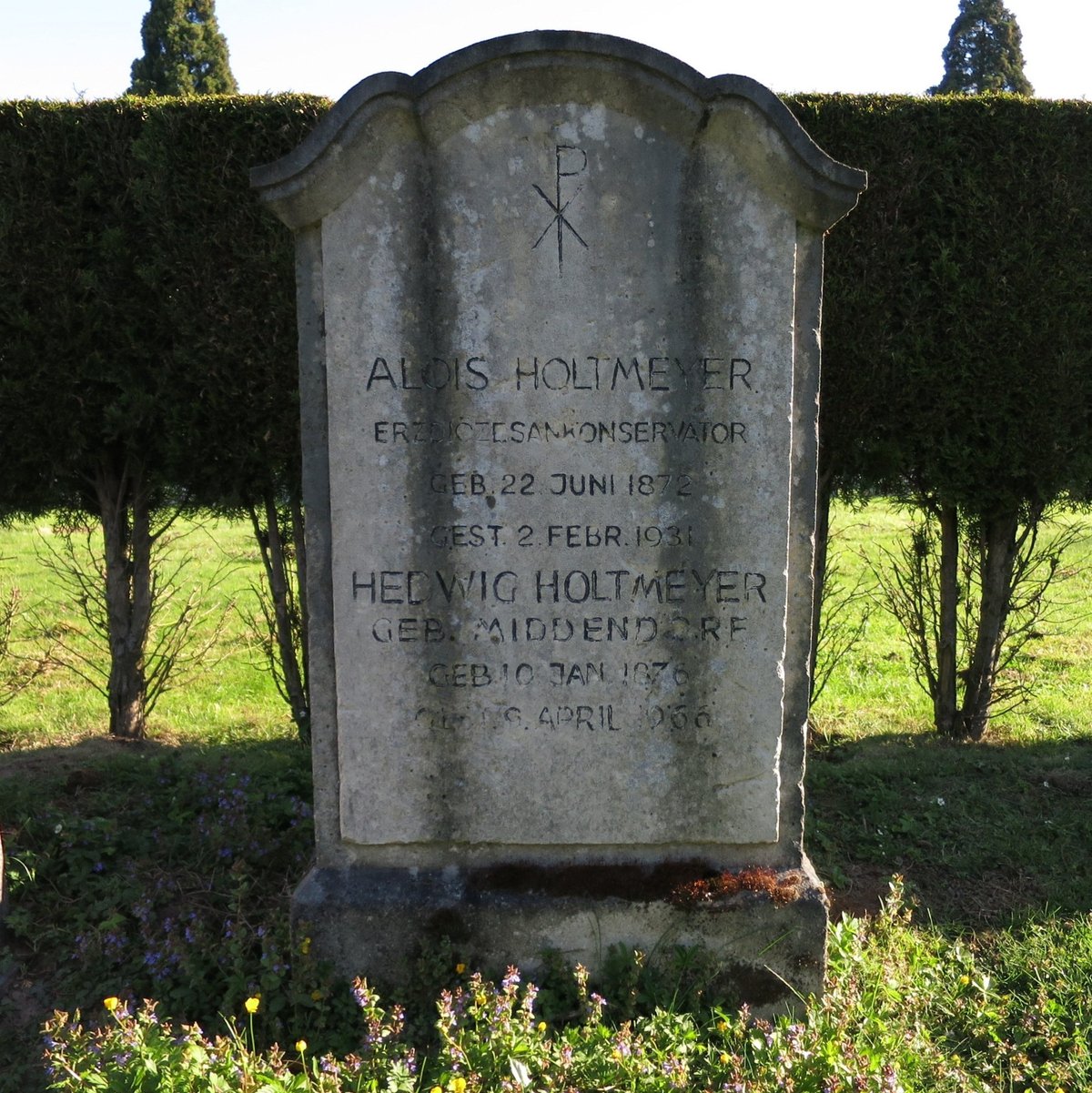
Cologne Southern Cemetery: Visiting Hours, Tickets, and Historical Significance
Date: 15/06/2025
Introduction
Cologne Southern Cemetery (Kölner Südfriedhof) stands among Cologne’s most significant historical and cultural landmarks. Established in 1901 to accommodate the city’s growing population, the cemetery serves as both a vast burial ground and a living memorial, reflecting the region’s complex wartime history and rich artistic heritage. Designed by landscape architect Adolph Kowallek, the cemetery’s 61 hectares encompass German and Commonwealth war graves, civilian memorials, and artistic monuments. With free entry year-round from dawn to dusk, accessible paths, and convenient public transport links, Cologne Southern Cemetery welcomes all visitors seeking history, reflection, or tranquility (Stadt Köln; Commonwealth War Graves Commission; NZ War Graves Project).
Table of Contents
- Introduction
- Historical Development
- Notable Burials and Memorials
- Cemetery Layout and Features
- Visiting Information: Hours, Tickets, and Accessibility
- Special Events and Visitor Experience
- Practical Tips and FAQs
- Conclusion and Cultural Insights
- References
Historical Development
Origins and Early Expansion (1896–1914)
Cologne Southern Cemetery was conceived in the late 19th century as Cologne expanded rapidly. Opened on April 1, 1901, the cemetery was laid out by Adolph Kowallek to reflect the era’s emphasis on peaceful, garden-like settings. The original 20 hectares featured winding paths, landscaped lawns, and tree-lined avenues to foster tranquility and reflection (Stadt Köln).
Wartime Transformations (1914–1945)
World War I and Interwar Growth
The outbreak of World War I necessitated rapid expansion, adding 7 hectares for military and civilian casualties, including those from Cologne’s first bombing in 1918 (TracesOfWar). By 1930, the cemetery had grown to over 61 hectares, with new sections reflecting a more linear design.
German and Commonwealth Military Cemeteries
A dedicated German military section (Ehrenfriedhof) was established in the 1920s, marked by a stele from Adolf von Hildebrand. It holds the graves of over 2,500 soldiers, including various nationalities. The British Commonwealth War Graves Cemetery, maintained by the Commonwealth War Graves Commission (CWGC), contains more than 3,000 servicemen, marked by uniform Portland stone headstones (Stadt Köln; CWGC).
World War II and Civilian Losses
The cemetery also commemorates the victims of World War II, including around 40,000 civilians who died during air raids. Their graves are marked by a high memorial cross, serving as a reminder of the city’s suffering (TracesOfWar).
Postwar Developments and Modern Era
The cemetery’s last major expansion in 1963 finalized its current boundaries. Recent modernization efforts, such as water supply renovations, continue to improve visitor facilities. Information on ongoing works and updates is available on the official city website (Stadt Köln).
Notable Burials and Memorials
- Otto Bongartz (1895–1970): Prominent architect known for the Church of St. Albertus Magnus.
- Peter Müller (1927–1992): Celebrated boxer, memorialized with a unique grave marker.
- Adolph Kowallek: The landscape architect’s grave is near the main entrance, honoring his foundational contribution.
- Indian Army and Gurkha Graves: Graves of Indian and Gurkha soldiers from World War I and II are marked with multilingual inscriptions (Academia.edu).
- Cologne Memorial: Honors 25 UK servicemen with no known grave, located at the entrance to the Commonwealth plots (CWGC).
Cemetery Layout and Features
Main Sections
- CWGC Plot: Uniform headstones, Cross of Sacrifice, manicured lawns, and symbolic plantings reflect CWGC principles of equality in death (Grace’s Guide).
- German Military Graves: Clustered in the Ehrenfriedhof, marked by significant sculptural monuments.
- Indian Army and Gurkha Graves: Separate but adjacent to the CWGC plot, emphasizing the international scope of remembrance.
- Italian POW Section: Over 1,900 Italian prisoners of war are interred here.
- Civilian and Family Plots: Scattered throughout, these areas feature diverse funerary art.
Artistic Heritage
The cemetery is an open-air museum, with sculptures, wrought ironwork, and stone carvings from the late 19th century to the present. Mature trees and peaceful lawns offer a contemplative setting year-round.
Visiting Information: Hours, Tickets, and Accessibility
Opening Hours
- April to October: 07:00–20:00
- November to March: 08:00–17:00
- Note: Hours may vary slightly; confirm on the official website.
Tickets
- Admission: Free—no tickets required.
Location and Transport
- Address: Höninger Platz 25, 50969 Köln (Zollstock district)
- Public Transport: Stadtbahn lines 12 and 15 to “Südfriedhof” station; several bus routes also serve the area (Mapcarta).
- By Car: Accessible via the E40 (A4) motorway; limited parking near the entrance (cpgw.org.uk).
- By Bicycle: The surrounding greenbelt offers scenic cycling routes.
Accessibility and Facilities
- Wheelchair Access: Main avenues are paved and wheelchair accessible; some older or secondary paths may be uneven.
- Facilities: Benches, restrooms near the main entrance, information boards with maps and historical context.
- Languages: Bilingual signage in German and English.
Special Events and Visitor Experience
Remembrance Events
- Remembrance Day (November 11) and ANZAC Day (April 25): Annual commemorations with wreath-laying and moments of silence.
- Other Ceremonies: Occasional local and international remembrance events; schedules available on the city website.
Guided Tours
- Self-Guided: Information boards and pamphlets support self-guided exploration.
- Guided Tours: Offered occasionally by local historical societies or upon request; contact the Cologne tourist office or CWGC for details.
Photography and Etiquette
- Photography: Permitted for personal use; please be respectful and avoid disrupting ceremonies or mourners.
- Etiquette: Maintain quiet reflection, dress modestly, and keep the grounds clean.
Practical Tips and FAQs
Frequently Asked Questions
Q: What are the visiting hours?
A: April–October: 07:00–20:00; November–March: 08:00–17:00.
Q: Is there an entrance fee?
A: No, admission is free.
Q: Are guided tours available?
A: Occasional guided tours; self-guided resources are always available.
Q: Is the cemetery wheelchair accessible?
A: Main paths are accessible; some areas may be uneven.
Q: Can I take photographs?
A: Yes, but please be respectful.
Q: Are there restrooms?
A: Yes, near the main entrance.
Visitor Tips
- Allow 1–2 hours to explore main sections.
- Dress comfortably and check the weather forecast.
- Download a map or use the CWGC’s virtual resources for navigation (CWGC).
- Consider combining your visit with nearby sites, such as Cologne Cathedral or Melaten Cemetery (thecrazytourist.com).
Conclusion and Cultural Insights
Cologne Southern Cemetery is more than a burial ground—it is a testament to Cologne’s resilience, multicultural heritage, and commitment to remembrance. Integrating German and Commonwealth war graves, as well as Italian, Indian, and civilian memorials, the cemetery embodies the city’s complex history and dedication to honoring the past. Its park-like setting, artistic monuments, and supportive visitor resources create a meaningful experience for all.
Whether attending a ceremony, exploring historical graves, or seeking a peaceful retreat, visitors will find profound insight into Cologne’s past and present. For updated information, event details, and digital guides, consult the official resources and consider downloading the Audiala app for enhanced tours and audio commentary.
References
- Cologne Southern Cemetery (Kölner Südfriedhof): Visiting Hours, Tickets & Historical Guide (Stadt Köln)
- Visiting Cologne Southern Cemetery: Hours, Tickets, History & Travel Tips (NZ War Graves Project)
- Visiting Cologne Southern Cemetery: Hours, Features, and Historical Insights (Grace’s Guide)
- Visitor Information and Cultural Insights: A Complete Guide to Visiting Cologne Southern Cemetery (cpgw.org.uk)
- Südfriedhof (Cologne) (Wikipedia)
For further information, downloadable maps, and virtual tours, visit the official CWGC page and Stadt Köln site. Enhance your visit with the Audiala app, and follow official channels for updates and event schedules.
